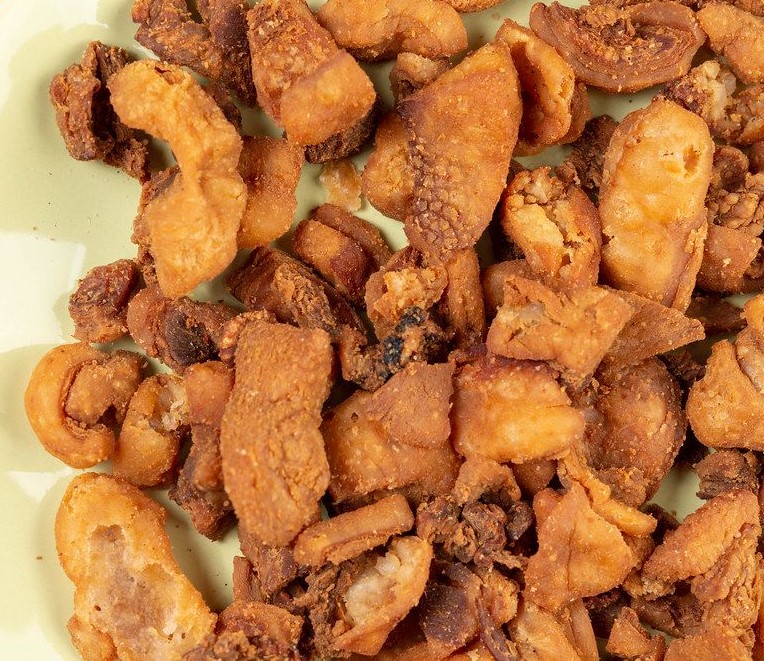
When we were young and my mother was preparing chicken for Shabbos – the Jewish Sabbath which runs from sunset Friday night until an hour past sunset Saturday night – she would cut off the excess chicken skin and fat and make gribenes although our term for it was griven. Further research has shown that there is another word still in use – greaves – meaning chicken cracklings, leading me to believe that griven and greaves are cognates (words with a common etymological origin).
Griven is easy enough to make. Chopped excess chicken skin is mixed together with chicken fat into a skillet. It is then cooked slowly, together, with chopped onions and salt , until the skin and the onions are browned and became crunchy. The skin is the griven. The fat can be drained off into a jar and refrigerated until it hardens into schmaltz to be used used later as a spread on bread or as a seasoning for other dishes. Alas, we have been taught that this fat is unhealthy and I have not eaten griven in years!
So what does all this have to do with my interest in nature? Even though excessive consumption of certain types of fats is unhealthy, a certain amount of fats and oils is vital for the healthy functioning of our bodies. This is also true for other animals and there is a special product on the market producing suet blocks for birds.
There are many brands of suet blocks on the market but I have found the most successful ones mix the suet with birdseed and grain particles. There is debate as to how useful the sense of taste is to birds seeking food. While humans have 2,000-8,000 taste buds, songbirds have only about 50. Nonetheless, birds will spit out distasteful tasting caterpillars. Recent studies have shown that birds use sight and touch as their primary senses to locate food. Despite a lower dependence of birds on taste, manufactured suet bars tend to be flavored and bars named “Apple Dough” and “Orange Burst” line the shelves.
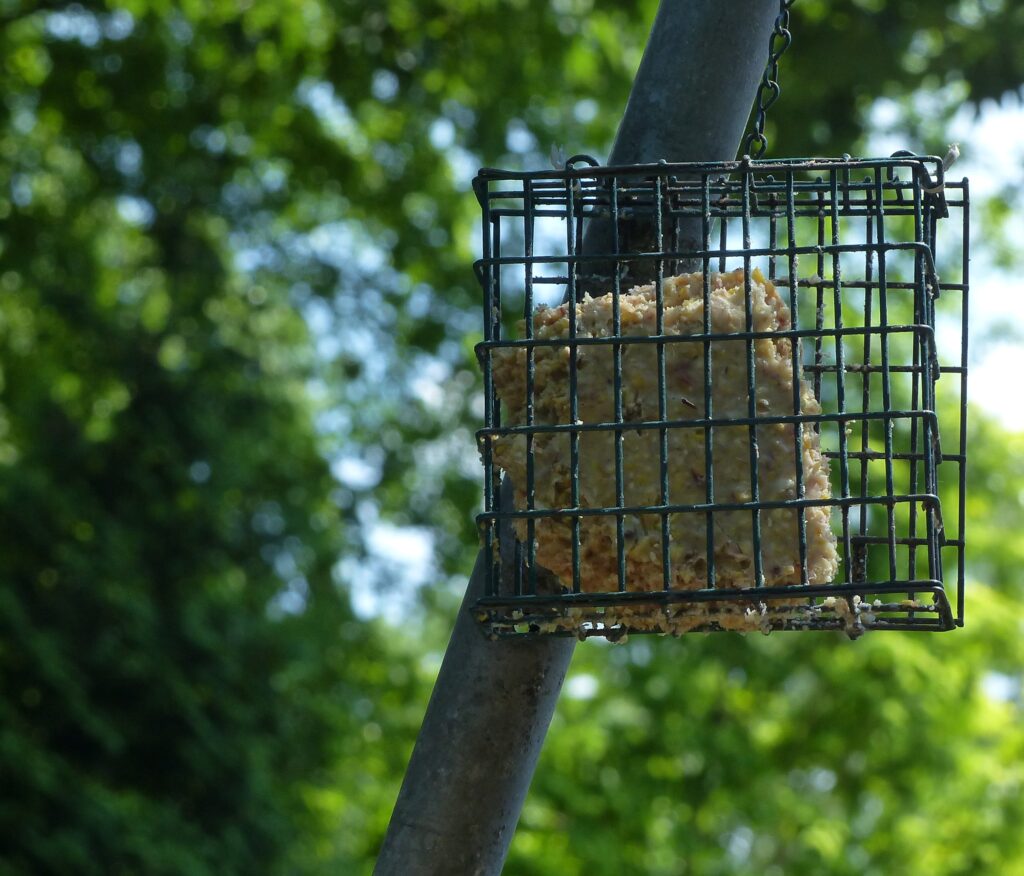
The suet block is usually enclosed in a metal cage and hung outside and the birds eat the suet by pecking between the wires of the cage. Even though the suet is more important for birds during low temperatures, I find that they mob the block throughout the year. I have a platform on my birdfeeder where I put out a bowl of birdseed and hang the suet about 8 inches above the platform.
The birds respond in three different ways to the suet block and cage:
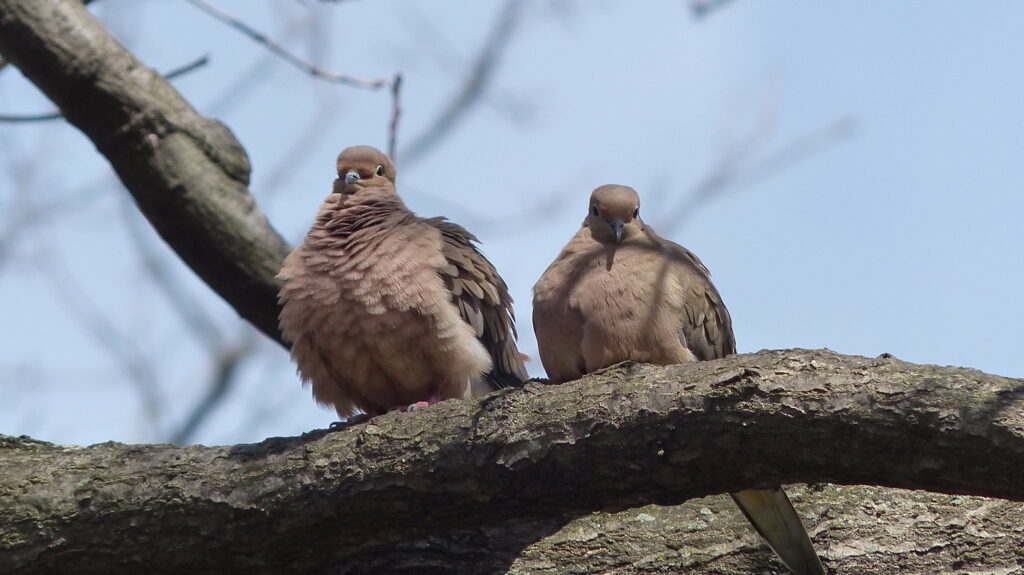
The first approach is simply to ignore the whole thing. The mourning dove (Zenaida macroura, Family Columbidae) cannot be bothered. It is a medium-sized bird and I suspect that it would have difficulty perching on the cage wire. Blue jays (Cyanocitta cristata, Family Corvidae) which are also medium-sized show scant interest. Cardinals (Cardinalis cardinalis, Family Cardinalidae) which are smaller than both are not interested.
Then there are the birds that cannot get enough. These include the sparrows (numerous genera, Family Passerellidae), gray catbirds (Dumetella carolinensis, Family Mimidae) and several kinds of woodpeckers. These birds are all smaller than the mourning dove and grab tightly onto the metal wires of the cage and maneuver around to peck away at it. Grackles (Quiscalus quiscula, Family Icteridae), however, which are quite large birds, love the suet and can reach easily from the platform up to the suet bar and peck away.
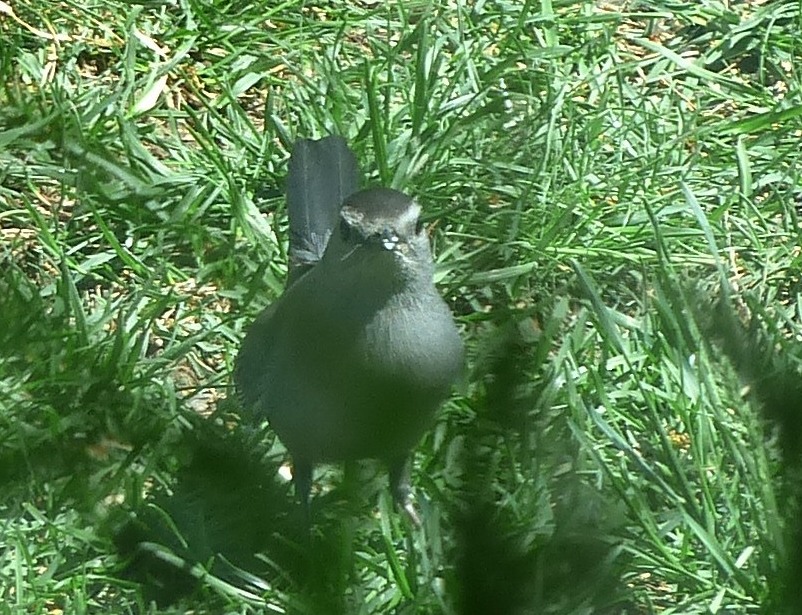
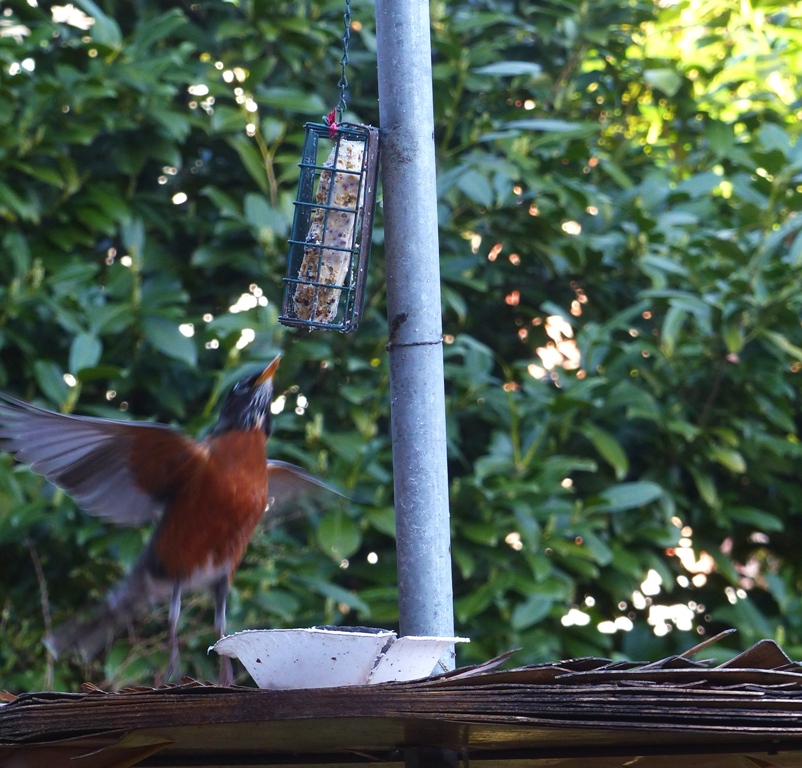
Lastly and most interesting for me are two birds that do not grasp the wires but still want to share in the bounty. The starlings (Sturnus vulgaris, Family Sturnidae) which are larger than sparrows but smaller than the mourning dove figured out that they could reach the suet by standing on the seed bowl on the platform. The robin cannot not figure this out. Instead it will repeatedly jump-flutter to reach the suet, grab a beakful and land back on the platform.
Every morning before I have my coffee, I fill the seed bowl for my birds and check on how much suet is left. At times the birds will go through a whole block in one day, sometimes it takes several days. I always have the feeling that my birds are completely aware of my schedule and are waiting on me for breakfast!
If you enjoyed this post, you may like my book: A Habit of Seeing: Journeys in Natural Science.

Highly interesting and very impressive.
That was simply delicious to read. Thanks Sura!
Learned a lot here. Great pictures!
Very interesting article and I just loved chicken fat on bread when I was a kid decades back